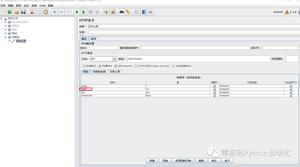Vue h函数的使用详解
一、认识
文档:https://v3.cn.vuejs.org/guide/render-function.html#dom-%E6%A0%91
h() 到底会返回什么呢?其实不是一个实际的 DOM 元素。它更准确的名字可能是 createNodeDescription,因为它所包含的信息会告诉 Vue 页面上需要渲染什么样的节点,包括及其子节点的描述信息。我们把这样的节点描述为“虚拟节点 (virtual node)”,也常简写它为 VNode 。“虚拟 DOM”是我们对由 Vue 组件树建立起来的整个 VNode 树的称呼。
二、使用
文档:https://v3.cn.vuejs.org/guide/render-function.html#h-%E5%8F%82%E6%95%B0
1、h() 参数
h() 函数是一个用于创建 VNode 的实用程序。也许可以更准确地将其命名为 createVNode(),但由于频繁使用和简洁,它被称为 h() 。它接受三个参数:
// @returns {VNode}h(
// {String | Object | Function} tag
// 一个 HTML 标签名、一个组件、一个异步组件、或
// 一个函数式组件。
//
// 必需的。
'div',
// {Object} props
// 与 attribute、prop 和事件相对应的对象。
// 这会在模板中用到。
//
// 可选的(在开发时。建议传,实在没有传的时候,传入 null)
{},
// {String | Array | Object} children
// 子 VNodes, 使用 `h()` 构建,
// 或使用字符串获取 "文本 VNode" 或者
// 有插槽的对象。
//
// 可选的。
[
'Some text comes first.',
h('h1', 'A headline'),
h(MyComponent, {
someProp: 'foobar'
})
]
)
2、简单的使用

3、实现一个计数器案例
<script>/* 设置样式需要在这引入,如果使用style标签,则不能写scoped,不利于设置局部样式,所以不建议 */
import "./style.css"
import { h, ref } from "vue";
export default {
// data 的写法
// data() {
// return {
// counter: 0
// }
// },
setup() {
const counter = ref(0)
return { counter }
},
/**
* 使用setup的时候,下面也可以用this,引入render有绑定this,所以下面取值,要用this
*/
render() {
return h("div", null, [
h("h1", null, `当前计数:${this.counter}`),
h("button", { onClick: () => this.counter++, class: "button" }, "加 1"),
h("button", { onClick: () => this.counter--, class: "button" }, "减 1")
])
}
}
</script>
修改成纯setup的写法:
<script>/* 设置样式需要在这引入,如果使用style标签,则不能写scoped,不利于设置局部样式,所以不建议 */
import "./style.css"
import { h, ref } from "vue";
export default {
// data 的写法
// data() {
// return {
// counter: 0
// }
// },
setup() {
const counter = ref(0)
return () => {
return h("div", null, [
h("h1", null, `当前计数:${counter.value}`),
h("button", { onClick: () => counter.value++, class: "button" }, "加 1"),
h("button", { onClick: () => counter.value--, class: "button" }, "减 1")
])
}
}
}
</script>
4、函数组件和插槽的使用
1)父组件
<script>import { h, ref } from "vue";
import Test from "./components/Test.vue"
export default {
setup() {
return {}
},
render() {
return h(Test, null, {
// default 对应的是一个函数,default是默认插槽
default: props => h("span", null, "父传入到组件中的内容:" + props.name)
})
}
}
</script>
2)子组件
<script>import { h } from "vue";
export default {
/**
* 接收夫传入的内容
*/
render() {
return h("div", null, [
h("div", null, "我是子组件"),
/**
* 在这判断别人是否传入
* 也可以写 null,啥也不展示
* 也可以在传入一个参数,使用的是 函数传参
*/
this.$slots.default ? this.$slots.default({ name: "哈哈哈" }) : h("div", null, "我是子组件的默认值")
])
}
}
</script>
注:在项目中,如果你像上面一样写代码,就太苦逼了,所以这个时候就要用 JSX。
三、jsx的使用
1、jsx的认识
jsx我们通常会通过Babel来进行转换(React编写的jsx就是通过babel转换的);
对于Vue来说,我们只需要在Babel中配置对应的插件即可;
文档:https://v3.cn.vuejs.org/guide/render-function.html#jsx
2、下载Babel插件支持vue(现在貌似脚手架直接支持)
npm install @vue/babel-plugin-jsx -D
3、配置babel
1)在根目录下创建 .babel.config.js
2)在.babel.config.js 里面加入,如下代码
module.exports = { presets: [
"@/vue/cli-plugin-babel/preset"
],
plugins: [
"@vue/babel-plugin-jsx"
]
}
4、简单的使用
<script>import { ref } from 'vue'
export default {
setup() {
let counter = ref(0)
return { counter }
},
render() {
return (
<div>
<div>JSX的使用</div>
<h2>当前数字:{this.counter}</h2>
</div>
)
}
}
</script>
5、计数器案例
<script>import { ref } from '@vue/reactivity'
export default {
setup() {
let counter = ref(0)
function add() {
counter.value++
}
function decrement() {
counter.value--
}
return { counter, add, decrement }
},
render() {
return (
<div>
<div>JSX的使用</div>
<h2>当前数字:{this.counter}</h2>
<button onClick={this.add}>加 1</button>
<button onClick={this.decrement} >减 1</button>
</div >
)
}
}
</script>
6、组件和插槽的使用
1)父组件
<script>import { ref } from '@vue/reactivity'
import Test from "./components/Test.vue"
export default {
setup() {
let counter = ref(0)
function add() {
counter.value++
}
function decrement() {
counter.value--
}
return { counter, add, decrement }
},
render() {
return (
<div>
<div>JSX的使用</div>
{/* 如果这块使用setup里面的变量、方法 要加this */}
<h2>当前数字:{this.counter}</h2>
<button onClick={this.add}>加 1</button>
<button onClick={this.decrement} >减 1</button>
<hr />
<Test>
{/* 这个里面写入传入的内容,也就是传入一个插槽 */}
{{ default: props => <p>我是父传入子的</p> }}
</Test>
</div >
)
}
}
</script>
2)子组件
<script>export default {
/**
* 接收夫传入的内容
*/
render() {
return (
<div>
<p>我是组件</p>
{/* 这块也有可能没穿,你要显示一个默认值,这个时候,你就要用三元运算符 */}
{this.$slots.default()}
</div>
)
}
}
</script>
注:如果你要h函数来写组件,请仔细查看文档,以上讲解,只是入门级。
到此这篇关于Vue h函数的使用详解的文章就介绍到这了,更多相关Vue h函数内容请搜索以前的文章或继续浏览下面的相关文章希望大家以后多多支持!
以上是 Vue h函数的使用详解 的全部内容, 来源链接: utcz.com/p/240367.html









